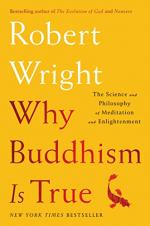
|
| Name: _________________________ | Period: ___________________ |
This test consists of 5 short answer questions, 10 short essay questions, and 1 (of 3) essay topics.
Short Answer Questions
1. The author repeatedly refers to the mental modules as temporarily taking what action against the focus of the mind?
2. Which philosopher is said to have had ideas that clearly reflect Buddhist ideals and that are reflected in modern psychology studies?
3. What animals are involved in the pellet experiment described by the author?
4. What does the author NOT use as an example of the indirect evidence received by the human brain?
5. Toward what goal does the author hope to propel his readers?
Short Essay Questions
1. For what purpose does the author discuss his disagreement with a prominent meditation teacher?
2. How does the author use self-deprecation and discussion of his own flaws to further his purpose?
3. What four themes does the author state are generally focused upon within the passing thoughts observed during meditation?
4. What connection does the author make between awareness and control and how is paradox used within the author's discussion of this connection?
5. Describe Plato's use of the horse and charioteer analogy to comment on the relationship between feelings and the rational self.
6. What three careers are used to characterize the three different schools of meditation and on which type does the author focus within Buddhism is True?
7. What is one method the author suggests for a way to observe one's thoughts objectively?
8. What emotion is one of the most studied in relation to the phenomenon of modules governing behavior and why?
9. How does the author characterize the difference between tribal psychology and general psychology?
10. What is the significance of the author's discussion of the Capgras delusion?
Essay Topics
Write an essay for ONE of the following topics:
Essay Topic 1
How does the author's use of the first and second person point of view serve the author's purposes over the course of the book? Discuss how the author's choice of point of view helps to advance the treatment of at least three particular themes within the text.
Essay Topic 2
Read the List of Buddhist Truths included in the back of Robert Wright's book Buddhism is True. Write an essay explaining the connection between one of the Buddhist Truths and an example or anecdote provided by the author within the text.
Essay Topic 3
How is the theme of desire portrayed in Robert Wright's book Buddhism is True? Examine the author's treatment of and messages regarding desire throughout the book.
|
This section contains 1,304 words (approx. 5 pages at 300 words per page) |

|




